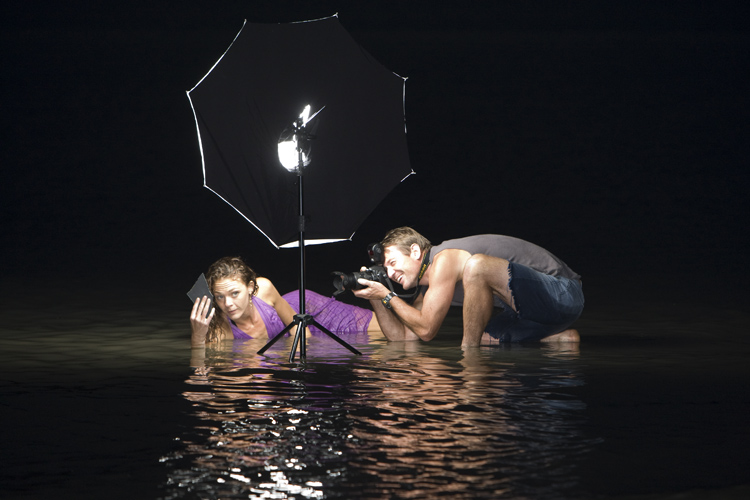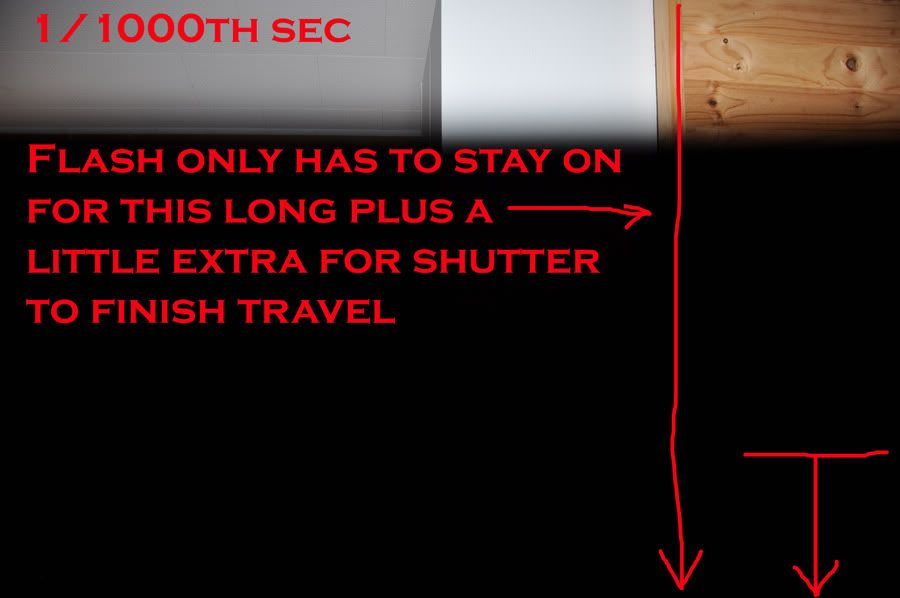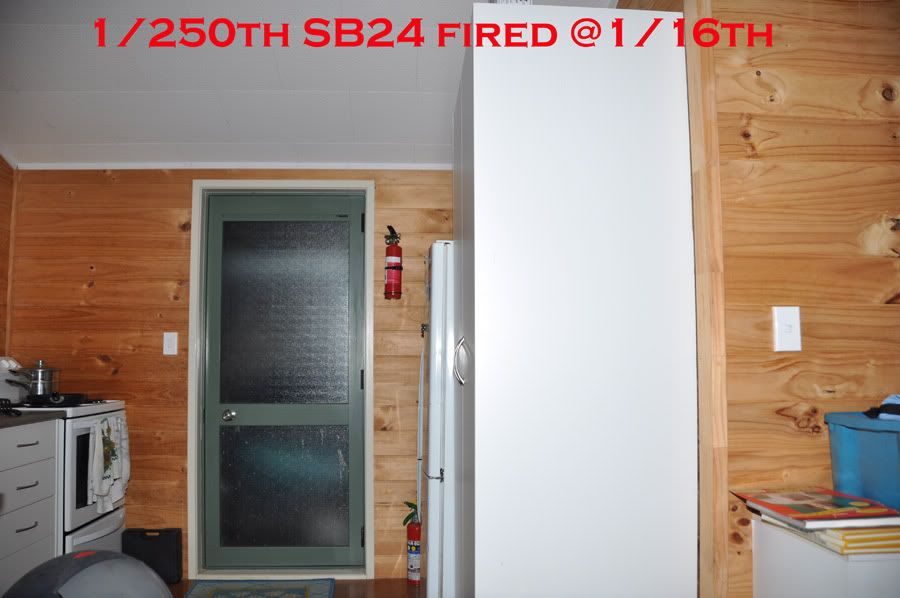Ok well I've been doing more tests and calculations on the subject to try and figure out why we lose so much power as we start going into auto-fp mode and think I just worked it out .
Auto-fp flash logically must stay on for longer for slower shutter speeds .
Let's take 1/1000th sec first , the flash must start 'pulsing' before the first curtain opens - then it must last for 1/280th sec [ if that's how fast the curtain moves ] but once the first curtain reaches the other side it must stay open for the duration of the slit that still has to close !
At 1/1000th sec let's say that slit is 1/4 of the frame = another 1/1120th of a second.
Now we look closer at the slit at speeds closer to normal sync .
1/320th shows a much larger slit [ 3X the size of 1/1000th?]
Now after the first curtain moves across the frame [ 1/280th sec] the flash still has to remain on until the second curtain is closed which will now take 3X as long as at 1/1000th = 3/1120th = 1/370th sec extra !
This would explain why the first drop into auto-fp mode gives us so much less power than 1/2000th .
When I fire the SB24 at 1/16th on the D90 at 1/250th sec I don't see the curtain starting to close yet though sync speed is back at 1/200th .
This means that when the flash goes into fp mode it is doing so over 1/280th sec plus the 1/250th sec that the rear curtain takes to close cutting the total power in half [approximately ] .
So auto-fp would have to push out around half as much power over twice the time as opposed to around 1/250th sec shutter travel at 1/4000th sec - not counting the power before and after the pulse .
So essentially different shutter speeds would vary how long auto-fp stays on , and how much power it pushes out over that time period resulting in the differences we see between 1/250th and 1/2000th in auto-fp mode !
Auto-fp flash logically must stay on for longer for slower shutter speeds .
Let's take 1/1000th sec first , the flash must start 'pulsing' before the first curtain opens - then it must last for 1/280th sec [ if that's how fast the curtain moves ] but once the first curtain reaches the other side it must stay open for the duration of the slit that still has to close !
At 1/1000th sec let's say that slit is 1/4 of the frame = another 1/1120th of a second.
Now we look closer at the slit at speeds closer to normal sync .
1/320th shows a much larger slit [ 3X the size of 1/1000th?]
Now after the first curtain moves across the frame [ 1/280th sec] the flash still has to remain on until the second curtain is closed which will now take 3X as long as at 1/1000th = 3/1120th = 1/370th sec extra !
This would explain why the first drop into auto-fp mode gives us so much less power than 1/2000th .
When I fire the SB24 at 1/16th on the D90 at 1/250th sec I don't see the curtain starting to close yet though sync speed is back at 1/200th .
This means that when the flash goes into fp mode it is doing so over 1/280th sec plus the 1/250th sec that the rear curtain takes to close cutting the total power in half [approximately ] .
So auto-fp would have to push out around half as much power over twice the time as opposed to around 1/250th sec shutter travel at 1/4000th sec - not counting the power before and after the pulse .
So essentially different shutter speeds would vary how long auto-fp stays on , and how much power it pushes out over that time period resulting in the differences we see between 1/250th and 1/2000th in auto-fp mode !



